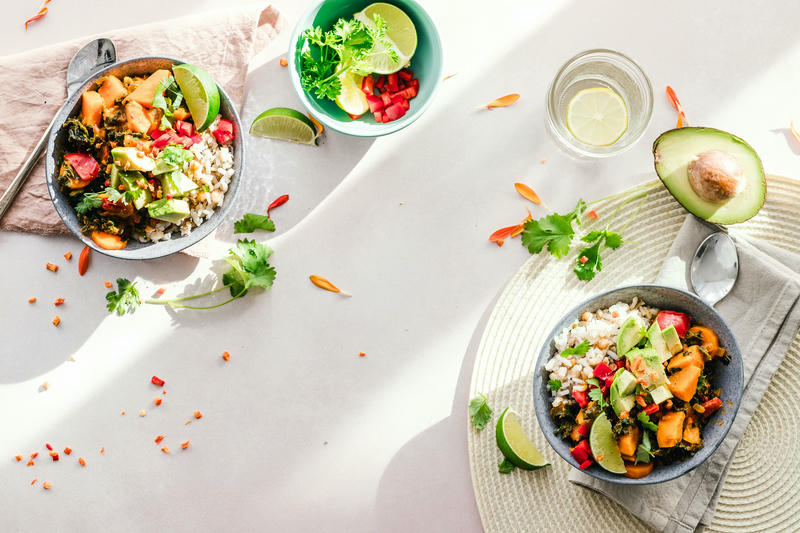What is important to know about parsley
Let’s take a closer look at the main properties of parsley (1,2) in the table:
| No. | Fact | Description |
| 1. | Source of antioxidants | Flavonoids, carotenoids and ascorbic acid inhibit oxidative stress in cells. This is the basis for preventing aging, heart disease, skin disease and the digestive system |
| 2. | Diuretic | Essential oils and naringenin stimulate kidney function. Increased urine flow helps combat swelling and prevents sand from forming in the kidneys. |
| 3. | Antispasmodic | Parsley has a mild antispasmodic effect. It should be remembered that it contains apiol, which can affect the menstrual cycle and cause abortion in pregnant women. |
| 4. | Improves digestion | Essential oils stimulate appetite and bile flow, enhance the production of digestive enzymes. In addition, parsley contains fiber, which is necessary for intestinal health. |
| 5. | Suppresses the activity of bacteria and fungi | Parsley has surpassed even lemon in the amount of vitamin C and other flavonoids that enhance the body’s immune defense. The plant contains antimicrobial substances – furocoumarins (psoralen, oxypeicedadine) |
| 6. | Strengthens bones | Parsley contains a lot of vitamin K, which helps bones absorb calcium and minerals. |
| 7. | Reduces the risk of inflammation and certain types of cancer | Greens contain anti-inflammatory substances apigenin and eugenol, which also have antitumor properties. Let’s not forget about the large number of antioxidants that strengthen the body’s defenses in the fight against cancer. |
| 8. | Helps control blood sugar | Myricetin in parsley can reduce blood glucose levels in diabetes |
| 9. | Good for the cardiovascular system | Parsley contains folic acid, antioxidants, and carotenoids. They reduce the risk of severe cardiovascular diseases, lower the level of “bad” cholesterol, and increase vascular tone. |
| 10. | Contains potent substances | Curly parsley seeds cannot be used to make oil because of their psychoactive properties. |
Relatively healthy people can get the maximum benefit from greens. In some diseases and conditions, abuse of parsley can harm the body, which will be discussed below in the article.
Composition and caloric content of parsley
The taste and chemical composition of parsley are greatly influenced by the growing place, climate, and plant variety. We provide you with average indicators.
Caloric content and BJU
Parsley is a low-calorie product. The nutritional value of the greens per 100 g is presented in the table below.
| Compound | Fresh | Dried |
| Proteins, g | 3.7–3.85 | 25.6 |
| Fats, g | 0.4–1.15 | 5.5 |
| Carbohydrates, g | 4–7.6 | 50.6 |
| Dietary fiber, g | 2.1–3.3 | 26.7 |
| Glycemic index (GI) | up to 15 | Up to 15 |
| Water, % | About 85 | 5.9 |
| Caloric content, kcal | 36–50 | 292 |
Adding a small bunch of greens dramatically changes the aroma and taste of the dish, while having little effect on the KBZhU.
Vitamins
We have compiled a table for you that clearly demonstrates the vitamin content in parsley, taking into account the daily requirement for them.
| Vitamin | Fresh | % of daily value | Dried | % of daily value |
| A (retinol), mcg | 421–424 | 50–60 | 97 | 10.3 |
| B1 (thiamine), mg | 0.098 | 7.4 | 0.196 | 12.5–13.1 |
| B2 (riboflavin), mg | 0.1–0.28 | 5.3–16.8 | 2.3–2.4 | 126.3–132.4 |
| B3 (PP, niacin), mg | 1.02–1.3 | 6.3–8.3 | 9.9 | 49.7 |
| B4 (choline), mg | 12.8 | 2.6 | 97.1 | 18.6–19.4 |
| B5 (pantothenic acid), mg | 0.3–0.4 | 6–7.7 | 1,1 | 21.2 |
| B6 (pyridoxine), mg | 0.117 | 4.8–10.4 | 0.9 | 42.9–B9 |
| B7 (biotin), mg | 0.4 | 0.8 | No data | No data |
| (folic acid), mcg45 | 116–152 | 29–36.5 | 180 | 43.2–45 |
| C (ascorbic acid), mg | 133–246 | 141.8–431 | 125 | 133.3–138.9 |
| K (phylloquinone), mcg | 790–1640 | 658.3–1312 | 1359 | 1087.6–1132.9 |
| E (alpha tocopherol), mg | 0.8–1.94 | 5.1–17.7 | 9 | 57.7–59.7 |
| U(methylmethionine sulfonium), mg | 6.4–20 | 3.2–9.6 | No data | No data |
| Beta-carotene, mcg | 4960–6150 | 97–111.1 | 1152 | 22.1–23 |
| Lutein + zeaxanthin, mcg | 5561 | 92.7 | 2428 | 40.5 |
In terms of vitamin C content, parsley is not inferior to red pepper and black currant, surpassing rowan and lemon by more than 2.5 times (2). Greens grown in northern soils often store much more vitamins.
Minerals
The microelement composition of parsley, presented in the table, deserves special mention.
| Microelement | Fresh | % of daily value | Dried | % of daily value |
| Calcium, mg | 94–354 | 13.2–20.4 | 1140 | 114 |
| Iron, mg | 6.2 | 59.6 | 22 | 122.4 |
| Magnesium, mg | 50–85 | 12–16.1 | 400 | 100 |
| Phosphorus, mg | 52.5–98.9 | 7–9.5 | 436 | 54.6 |
| Potassium, mg | 443–748 | 15.3–21.3 | 2683 | 107.3 |
| Sodium, mg | 56–80.9 | 4.1–8.8 | 452 | 34.8 |
| Zinc, mg | 1.1–1.46 | 8.8–10.7 | 5.44 | 45.3 |
| Copper, mcg | 90–150 | 12 | 780 | 78 |
Fresh and dried parsley contains essential amino acids (leucine, tryptophan, valine). Microelements in greens are good for skin, hair and bones.
Benefits of parsley for the body
Parsley extracts are included in many herbal preparations and dietary supplements, especially for the prevention of bladder diseases. As an independent remedy, the greenery is used only in folk medicine, which can be unsafe.

















